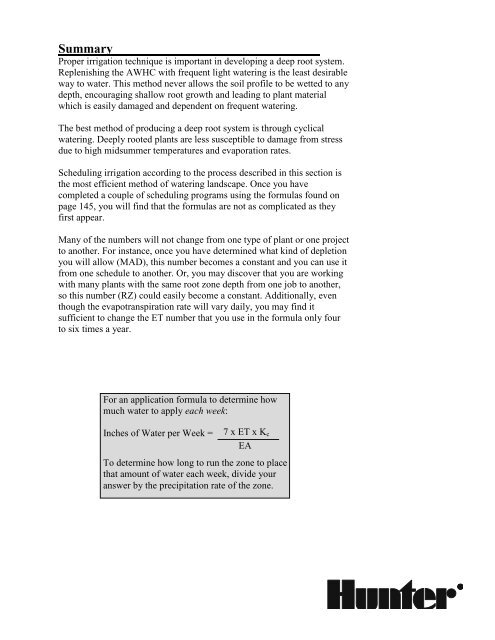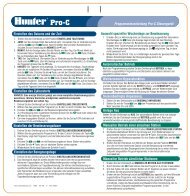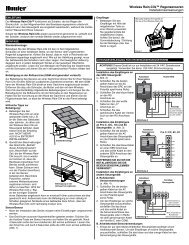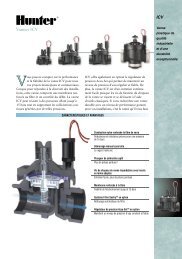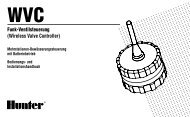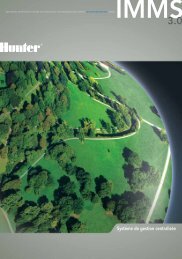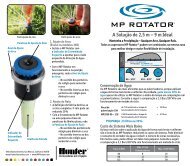Irrigation Professionals with questions about ... - Hunter Industries
Irrigation Professionals with questions about ... - Hunter Industries
Irrigation Professionals with questions about ... - Hunter Industries
You also want an ePaper? Increase the reach of your titles
YUMPU automatically turns print PDFs into web optimized ePapers that Google loves.
SummaryProper irrigation technique is important in developing a deep root system.Replenishing the AWHC <strong>with</strong> frequent light watering is the least desirableway to water. This method never allows the soil profile to be wetted to anydepth, encouraging shallow root growth and leading to plant materialwhich is easily damaged and dependent on frequent watering.The best method of producing a deep root system is through cyclicalwatering. Deeply rooted plants are less susceptible to damage from stressdue to high midsummer temperatures and evaporation rates.Scheduling irrigation according to the process described in this section isthe most efficient method of watering landscape. Once you havecompleted a couple of scheduling programs using the formulas found onpage 145, you will find that the formulas are not as complicated as theyfirst appear.Many of the numbers will not change from one type of plant or one projectto another. For instance, once you have determined what kind of depletionyou will allow (MAD), this number becomes a constant and you can use itfrom one schedule to another. Or, you may discover that you are working<strong>with</strong> many plants <strong>with</strong> the same root zone depth from one job to another,so this number (RZ) could easily become a constant. Additionally, eventhough the evapotranspiration rate will vary daily, you may find itsufficient to change the ET number that you use in the formula only fourto six times a year.For an application formula to determine howmuch water to apply each week:Inches of Water per Week =7 x ET x K cEATo determine how long to run the zone to placethat amount of water each week, divide youranswer by the precipitation rate of the zone.


